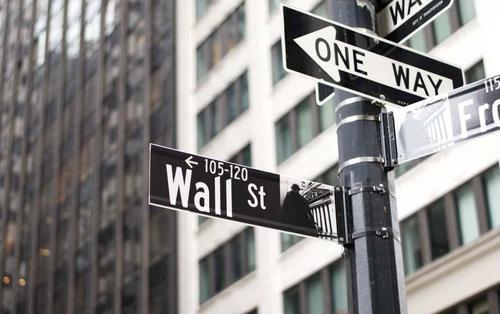ICLN ETF: Is It Worth Investing in Clean Energy in 2024?
Investing in the iShares Global Clean Energy ETF (ICLN) in 2024 presents a complex decision for investors. While the ETF offers exposure to the burgeoning clean energy sector, recent performance metrics and market trends suggest caution. This report will analyze ICLN’s current standing, compare it with other clean energy ETFs, and provide a balanced view on its investment potential.
Introduction
Performance Metrics and Market Trends
Recent Performance
According to Benzinga, ICLN has struggled in 2024, showing a negative performance of 8% since January and a 12% decline over the past year. This bearish trend is further corroborated by MarketBeat, which reports that ICLN is trading at $14.17, down 9.0% from $15.57 at the beginning of the year. The ETF’s one-year return is -11.22%, as noted by Investing.com, and -18.1% as of August 9, 2024, according to Equities.com.
Comparative Analysis
In contrast, other clean energy ETFs have shown robust performance. For instance, USNZ (Xtrackers Net Zero Pathway Paris Aligned US Equity ETF) has achieved a remarkable 44.08% growth over the past year, while NETZ (TCW Transform Systems ETF) and USCL (iShares Climate Conscious & Transition MSCI USA ETF) have grown by 20.82% and 17.50%, respectively. This stark difference in performance raises questions about ICLN’s current investment appeal.
Technical Analysis
Technical analysts have identified ICLN as being in a “death cross” pattern, indicating a bearish trend. This pattern, combined with the ETF’s recent negative performance, suggests that ICLN may not be a favorable investment option in the short term.
Underlying Trends and Market Forces
Sector Volatility
The clean energy sector is inherently volatile, influenced by various factors such as technological advancements, regulatory changes, and geopolitical events. The upcoming 2024 U.S. presidential election is a significant factor that could impact solar stocks and, by extension, ETFs like ICLN. Political decisions regarding renewable energy policies could either bolster or hinder the sector’s growth.
Diversification and Holdings
ICLN holds 129 companies, with its top ten holdings including Enphase Energy, First Solar, and Consolidated Edison. While this diversification provides some risk mitigation, the performance of individual companies within the ETF can significantly impact its overall performance. For example, Nova (NOVA) experienced a 24% price growth, while SunPower Corp (SPWR) saw a 42% decline, highlighting the mixed performance within the ETF.
Market Capitalization and Volatility
ICLN has a market capitalization of $2.17 billion and a beta of 1.09, indicating it is slightly more volatile than the market. The average market capitalization of the companies in this ETF is $4.11 billion, with First Solar being the largest at $18.04 billion and Maxar Technologies the smallest at $169.42 million. This range of market capitalizations reflects the diverse nature of the companies within the ETF, contributing to its overall volatility.
Analyst Opinions and Expert Insights
Cautious Outlook
Analysts have expressed a cautious outlook on ICLN, emphasizing the importance of energy ETFs in the current market landscape but highlighting the ETF’s recent struggles. The mixed performance forecasts and the ETF’s negative trend underscore the need for careful consideration before investing.
Potential for Growth
Despite recent setbacks, the long-term potential for growth in the clean energy sector remains strong. Global shifts towards sustainability and reducing greenhouse gas emissions are likely to drive demand for renewable energy. Investing in ETFs like ICLN provides exposure to a diversified portfolio of clean energy companies, which can be less risky than investing in individual stocks.
Risks and Challenges
The primary risks associated with ICLN include market volatility, the performance of the renewable energy sector, and potential regulatory changes. As the energy landscape evolves, there will be both winners and losers, making it crucial for investors to conduct thorough research before investing.
Actionable Insights and Recommendations
Diversify Investments
Given the mixed performance of ICLN, investors should consider diversifying their investments across multiple clean energy ETFs. This approach can help mitigate risks associated with the underperformance of a single ETF. For instance, investing in high-performing ETFs like USNZ or NETZ alongside ICLN could provide a balanced exposure to the clean energy sector.
Monitor Political Developments
Investors should closely monitor political developments, particularly the upcoming 2024 U.S. presidential election, as policy changes could significantly impact the renewable energy sector. Staying informed about regulatory changes and government incentives for clean energy can help investors make more informed decisions.
Long-term Perspective
While ICLN’s recent performance has been disappointing, the long-term potential for growth in the clean energy sector remains promising. Investors with a long-term perspective may find value in holding onto ICLN, anticipating future growth driven by global sustainability initiatives.
Regular Performance Review
Given the volatility of the clean energy sector, it is essential for investors to regularly review the performance of their investments. Keeping track of ICLN’s performance metrics, market trends, and analyst opinions can help investors make timely decisions to maximize returns.
Conclusion
Investing in the iShares Global Clean Energy ETF (ICLN) in 2024 presents a nuanced decision. While the ETF offers exposure to the growing clean energy sector, recent performance metrics and market trends suggest caution. Investors should consider diversifying their investments, closely monitoring political developments, and maintaining a long-term perspective. Regular performance reviews and staying informed about market trends can help investors navigate the complexities of investing in ICLN and the broader clean energy sector.
In summary, while ICLN may not be the most attractive investment option in the short term, its long-term potential remains tied to the global shift towards sustainable energy solutions. Investors willing to navigate the associated risks and volatility may find value in including ICLN as part of a diversified investment portfolio.


